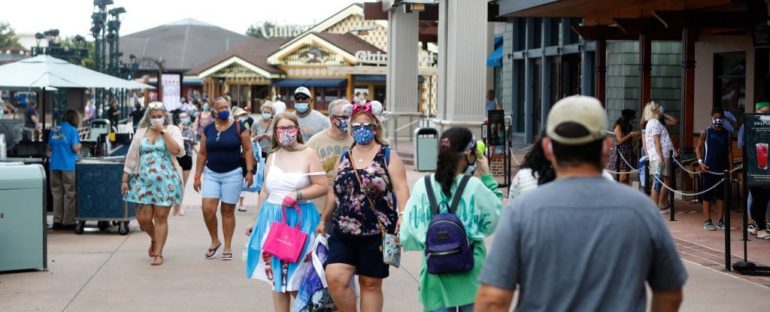The United States still has a long way to go before COVID-19 reaches its natural end.
A new analysis of public health data estimates that by the middle of November 2020, 14 percent of the US population had been infected with SARS-CoV-2.
That’s could be as many as 50 million people – a substantial chunk of the public – and yet without a vaccine, public health experts predict up to five times as many people would need to be infected before herd immunity is naturally reached.
From what we know about the new coronavirus so far, between 60 and 70 percent of the population will need to be infected before enough people in the community are immune and can slow its spread.
This is what experts refer to as herd immunity, but that threshold will no doubt continue to fluctuate the more we learn about general susceptibility, possible reinfections and the efficacy of approved vaccines.
As such, vaccination remains our best option to save lives going forward and return to some form of normalcy in the near future. The recent analysis of last year’s infection rate helps underscore that message.
The recent study was conducted and funded by the pharmaceutical companies Pfizer and Merck and this conflict of interest is openly stated.
That said, the findings are peer-reviewed and based on public health surveys taken by the US Centres for Disease Control and Prevention (CDC), which were specifically collected so that scientists could estimate infection rates in just this manner.
The conclusion of the study is also supported by previous analyses on public immunity and the views of several leading epidemiologists.
In September of 2020, for instance, a study from Stanford University found roughly nine percent of the US population had antibodies for COVID-19, and the country’s top infectious disease expert, Anthony Fauci, announced we were “nowhere near” herd immunity.
By November 15, the CDC had officially reported well over 10 million new COVID-19 cases and 244,810 deaths.
But this surge in registered cases is likely an underestimate. Many people infected with the novel coronavirus do not show symptoms and do not seek medical care. The sickness can also be conflated with other respiratory infections.
Measuring how many people in the public have natural antibodies for COVID-19 can help determine if they’ve been sick in the past. Yet there is also the possibility that these immune markers can wane over time, which means these tests aren’t always accurate and can be subject to sampling bias, where only the sickest people get tested and not a randomised group.
Nevertheless, antibody surveys are a helpful way to predict the true rate of infection amongst the public, and more of them are needed going forward so that we can effectively monitor the pandemic, even once vaccines have been rolled out.
To adjust for these under-reported cases, the recent research sifted through antibody surveys from 10 states around the country.
Even with millions of new infections occurring each week, the authors found a substantial gap between where these states were in November and where they need to be to reach herd immunity.
While some people, including the Trump administration, have suggested letting the virus run rampant as a way to speed up the end of the pandemic, many public health experts are appalled by that idea. Regardless of whether or not natural herd immunity can be achieved in the near future, they consider such a plan disastrous.
“Never in the history of public health has herd immunity been used as a strategy for responding to an outbreak, let alone a pandemic. It is scientifically and ethically problematic,” the director of the World Health Organisation Tedros Adhanom Ghebreyesus said in a recent media briefing.
“Herd immunity is achieved by protecting people from a virus, not by exposing them to it.”
If 70 percent of the US population gets sick, experts think up to 0.7 percent could die from the infection, which is well over a million people. Meanwhile, around 10 percent of COVID-19 patients could need intensive care.
In November alone, the US reported more COVID-19 cases than most countries have had all year. By December, cases and fatalities began to ramp up more, even as the country approved several safe and efficacious vaccines for roll out.
The death toll from this rampant spread is probably much worse than official numbers suggest. Similar to other studies, the new analysis found about 35 percent of COVID-19 deaths are not reported.
The only way to save these lives, experts agree, is to vaccinate the public as soon as possible.
Fauci has said “true herd immunity” would probably require up to 85 percent of the public to be vaccinated. Even after that, we might need booster shots.
Contracting COVID-19 or getting the required doses of the vaccine simply isn’t a guarantee of lifelong or even year-long immunity, which is another reason why aiming for natural herd immunity is not a foolproof solution and could be catastrophic.
“The time to discuss herd immunity is when we have a vaccine developed, and not one second earlier,” writes Australian epidemiologist Gideon Meyerowitz-Katz, “because at that point we will be able to really stop the epidemic in its tracks.”
Until then, even those who have gotten sick before or who have gotten the shot should still be isolating and wearing masks. It’s the safe and responsible thing to do.
The study was published in JAMA Network Open.
